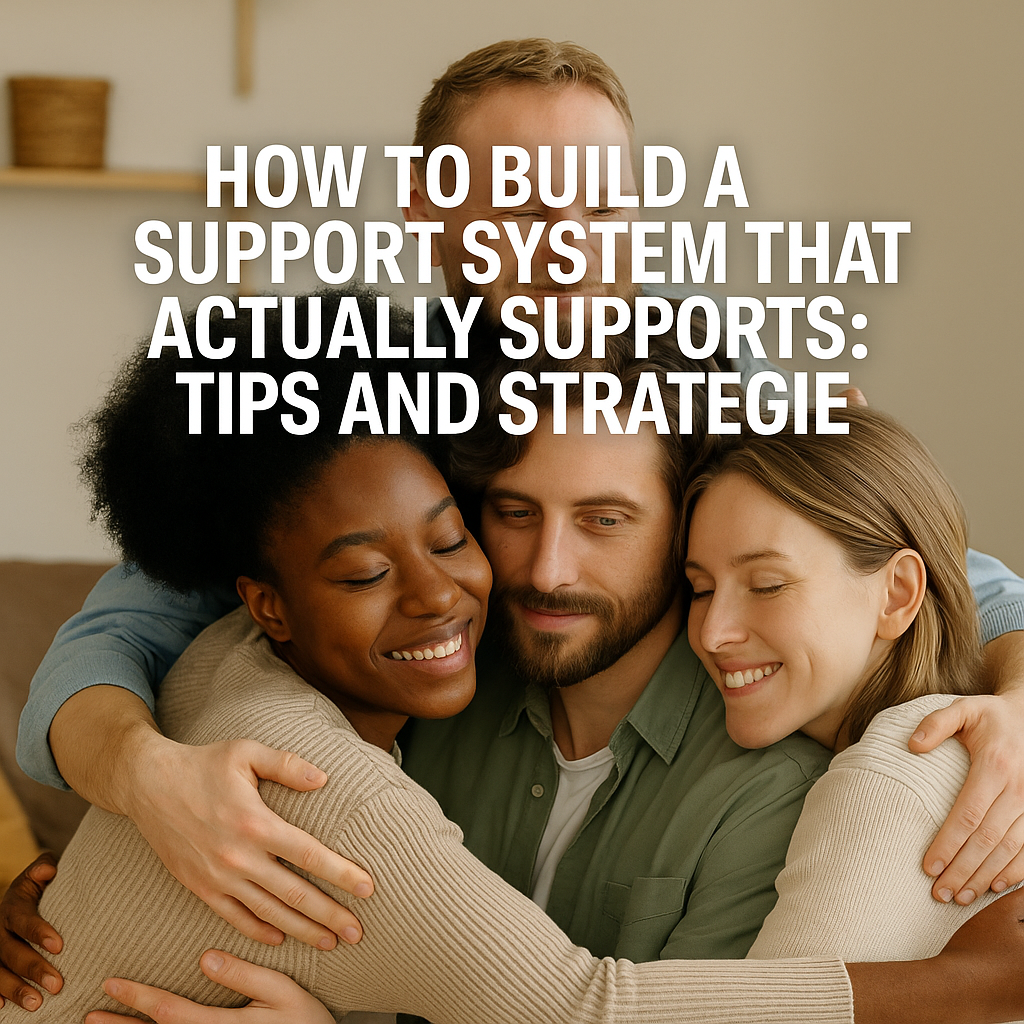Why a Real Support System Matters More Than Ever
How to Build a Support System That Actually Supports You. It’s easy to believe we’re connected in today’s world of Instagram stories and WhatsApp groups. But let’s get real—feeling truly supported goes beyond likes and emojis. A real support system is about consistent presence, mutual effort, safe space, and deep trust. It’s the difference between someone texting “you good?” and someone showing up to your doorstep when you’re falling apart.
When you have that kind of support, your stress levels drop, your decision-making gets clearer, and your emotional resilience skyrockets. But when you don’t, it’s a recipe for burnout, isolation, and chronic anxiety.
Building that kind of system doesn’t just happen. It’s a strategy. It’s intentional. And you’re about to learn exactly how to do it.
Step 1: Identify the Types of Support You Actually Need
Let’s start with the obvious—but often skipped—question: What kind of support are you really looking for?
- Emotional Support: Someone who will hold space for you without trying to fix you.
- Informational Support: People who can share useful insights, advice, or lived experience.
- Practical Support: Friends who help with daily tasks, errands, or responsibilities.
- Social Support: People you can just do life with—hang out, laugh, decompress.
- Accountability Support: Someone who nudges you forward when you’re stuck in procrastination or self-doubt.
Knowing your needs gives you the clarity to build a circle that reflects them.

Step 2: Audit Your Current Network (Yes, It’s Time)
Before looking outward, look inward. Ask yourself:
- Who do I talk to when I’m not okay?
- Who actually listens and checks in later?
- Who makes me feel seen, heard, and safe?
- Who drains me, or dismisses what I’m going through?
Make a simple two-column list: Energizers vs. Depleters.
Start cultivating from your Energizers list. And it’s okay—necessary even—to create boundaries around the Depleters.
Step 3: Use These Scripts to Initiate Real Connection
Sometimes it’s not that we lack people, it’s that we don’t know how to initiate depth. Here are easy, relatable scripts:
- To Reconnect with Someone You Value:
“Hey [Name], I’ve been thinking about how important your presence is in my life. Would love to catch up soon and reconnect more intentionally.”
- To Ask for Support:
“I’m going through something a little heavy and I could really use someone to just listen without judgment. Can you hold space for me sometime this week?”
- To Set Boundaries with Love:
“I care about you deeply, but I’m realizing I need to take a step back from interactions that leave me feeling drained. I hope you can understand.”
- To Offer Support:
“I just wanted to check in—how have you been really? I’m here for you if you ever want to talk, vent, or just chill.”
These are the real talk starters that lay the foundation for trust and safety.

Step 4: Diversify Your Support Ecosystem
Relying on just one person—even your partner or best friend—isn’t sustainable. You need layers of support:
- Inner Circle: 1-3 people you trust completely.
- Middle Circle: Friends or peers you enjoy spending time with, who uplift you.
- Outer Circle: Acquaintances, mentors, online communities—you may not be super close, but they add value to your growth.
Diversifying your system protects you from burnout and gives you the flexibility to get different needs met from different sources.
Step 5: Be the Kind of Support You’re Looking For
People mirror energy. If you want emotional intelligence, empathy, consistency—be that for others.
- Follow up when someone says they’re struggling.
- Remember the small things—birthdays, interviews, breakups.
- Show up without being asked.
- Respect boundaries.
That’s how reciprocal support is born. And that’s the kind of network that lasts.
Step 6: Tap Into Local and Online Communities
Sometimes your current circle just isn’t enough—and that’s okay. There are incredible spaces where you can find your people:
- Therapy groups or circles in your local area.
- Support communities on Reddit like r/KindVoice or r/MentalHealth.
- Interest-based Discords or Slack channels.
- Faith-based or spiritual communities.
- Volunteer groups in your city.
The vibe? Intentional, nonjudgmental, and growth-focused.

Step 7: Maintain and Nurture Those Connections
This isn’t a one-and-done deal. Like any relationship, your support system needs attention.
- Schedule monthly check-ins.
- Plan intentional hangouts.
- Send voice notes instead of texts.
- Share resources or articles that made you think of them.
- Let people know they matter to you.
What to Do When You Feel Like You Have No One
If you’re in a season where you feel deeply alone, you’re not broken. You’re human.
Start by being the safe space for yourself. Journal. Meditate. Go for walks. Say out loud, “I deserve people who love me as I am.”
Then, take one small step:
- Message that friend you haven’t spoken to in years.
- Join a low-pressure online group.
- Book a therapy session.
- Tell someone at your yoga class you like their energy.
It’s okay to start small. But just start.
You Deserve Real Support
Building a support system that truly supports you isn’t fluffy advice. It’s a cornerstone of emotional survival.
The world can be overwhelming. But with the right people in your corner, you’ll never feel like you’re fighting it alone.
Give yourself permission to seek, nurture, and hold space for the kind of connections you really need.
Because you’re not too much. You’re not alone. And you deserve to feel held.
You can also checkout our other articles on mental health:




One thought on “How to Build a Support System That Actually Supports You: Proven Scripts and Life-Changing Strategies”